
Virtual Staging vs Virtual Renovation: Understanding the Difference
Introduction
The real estate industry has always evolved alongside advancements in technology. Today, two cutting-edge tools—Virtual Staging vs Virtual Renovation—are revolutionizing the way properties are presented to potential buyers. These digital solutions are becoming essential marketing techniques, enabling real estate agents and homeowners to showcase properties in the best possible light without physically altering them. But what exactly are these technologies, and when should you use one over the other? This article explores the key differences between virtual staging vs virtual renovation, helping you decide which method is right for your property.
Virtual Staging vs Virtual Renovation: What is Virtual Staging?
Virtual staging is a digital process where empty or sparsely furnished homes are virtually enhanced with furniture and decor using 3D design software. Rather than physically staging a home with rental furniture and accessories, virtual staging allows real estate agents and sellers to create inviting and aesthetically appealing rooms entirely online.
The main purpose of virtual staging is to help prospective buyers visualize how a space could look when fully furnished. Empty homes often feel cold and uninviting, making it difficult for buyers to imagine themselves living in the space. Virtual staging solves this problem by creating a warm, furnished environment that evokes an emotional response from viewers.
Common Uses of Virtual Staging
Virtual staging is particularly effective for:
- Empty properties: Homes that are vacant or minimally furnished.
- Different design styles: Showing off various interior design options, such as modern, traditional, or minimalist looks, to appeal to a wide range of buyers.
- Cost-effective staging: Allowing sellers to stage multiple properties without the cost and hassle of moving physical furniture.
By transforming a bare room into a cozy, inviting space, virtual staging can make a significant difference in how a property is perceived, leading to faster sales and increased buyer interest.
You may want to read more: “The impact of virtual staging on the real estate industry”
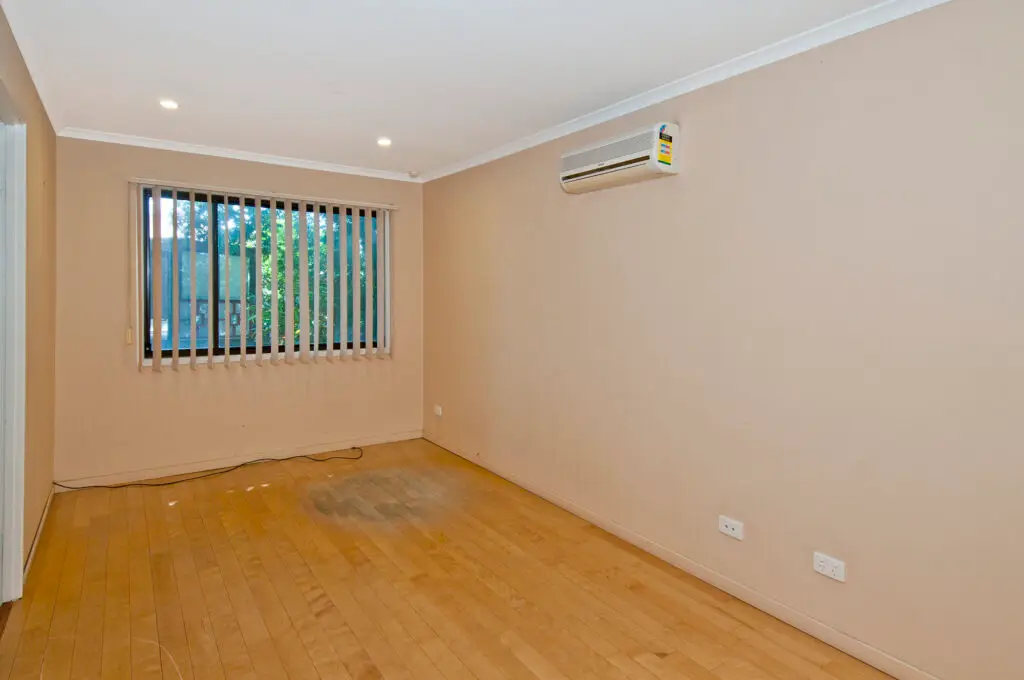
Before: Empty Room
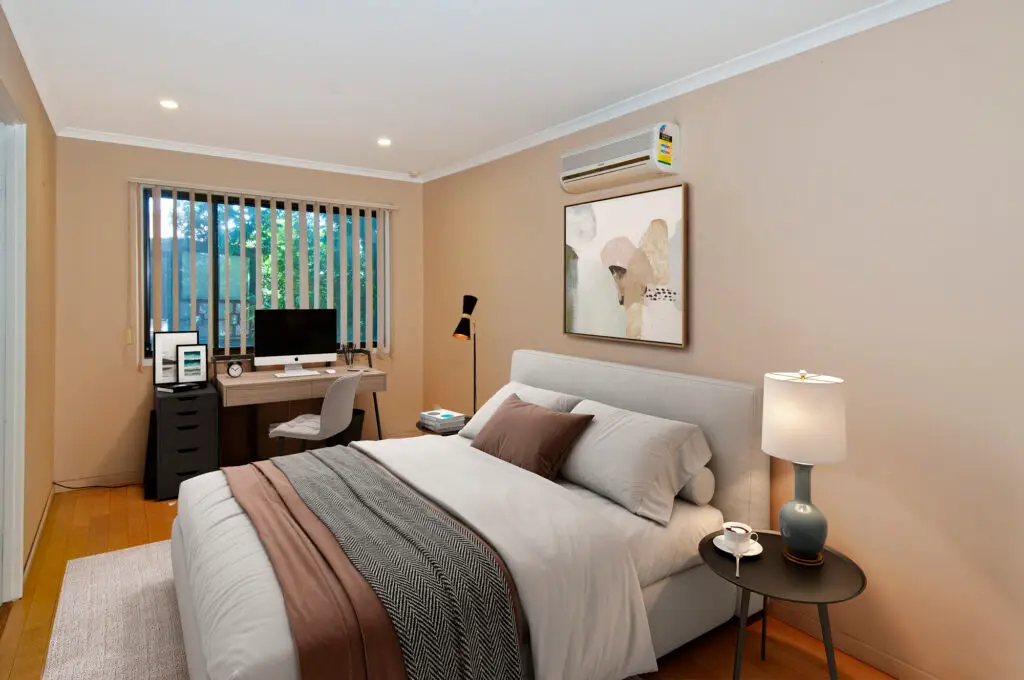
After: Virtual Staging by Digihomestudio.com
Virtual Staging vs Virtual Renovation: What is Virtual Renovation?
While virtual staging focuses on furniture and decor, virtual renovation takes things a step further by digitally altering a property’s structure, layout, or materials. Virtual renovation uses advanced design software to simulate architectural changes, such as removing walls, upgrading flooring, or even remodeling entire kitchens and bathrooms.
The primary purpose of virtual renovation is to give potential buyers a clear vision of what the property could look like after renovation. This is particularly useful for older or outdated homes that may not be visually appealing in their current state but have significant potential after some structural updates. Virtual renovation helps bridge that gap between what the property is now and what it could be.
Common Uses of Virtual Renovation
Virtual renovation is ideal for:
- Outdated properties: Homes that need visual enhancement to highlight their potential.
- Fixer-uppers: Buyers who are open to renovations but need help visualizing the end result.
- Structural changes: Demonstrating major alterations, such as creating an open floor plan or adding modern features.
By showcasing the possibilities of a home in need of work, virtual renovation opens up opportunities for buyers who might otherwise overlook the property due to its current condition.
You may want to read more: “Virtual Staging Renovation: Transform Your Home Without Lifting a Finger”
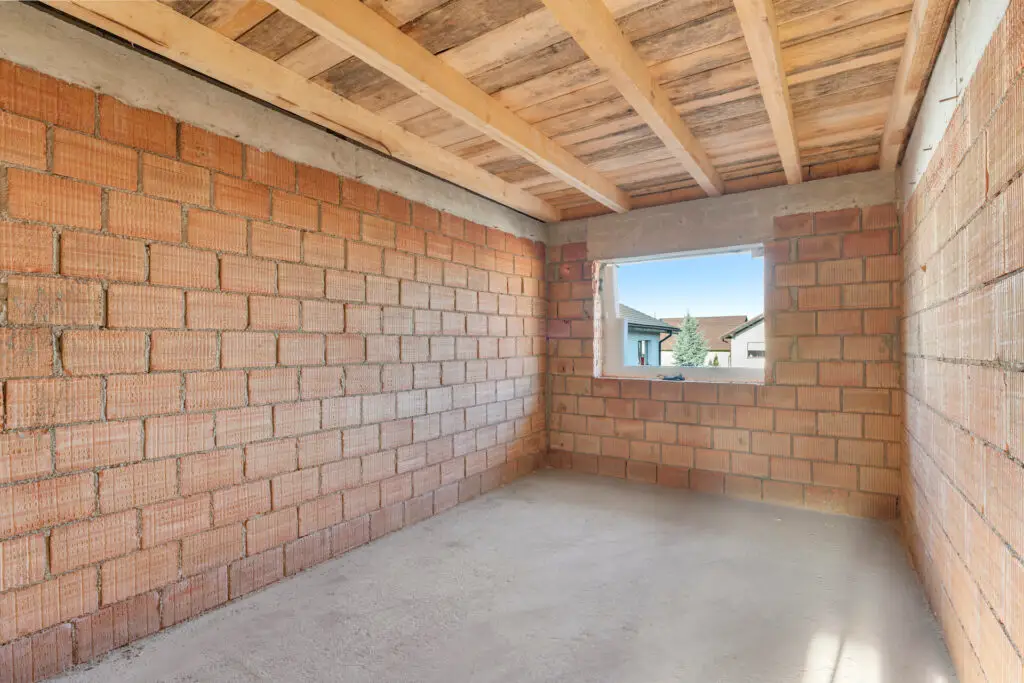
Before: Empty Room

After: Virtual Renovation by Digihomestudio.com
Virtual Staging vs Virtual Renovation: Key Differences
Although virtual staging vs virtual renovation are both powerful tools, they serve different purposes and target different aspects of a property. Understanding the distinctions between them is crucial when deciding which method to use in your real estate marketing efforts.
Scope
The primary difference lies in the scope of changes:
- Virtual staging focuses solely on interior design elements, such as adding furniture, rugs, and artwork to enhance the look of a space without changing the structure.
- Virtual renovation involves more extensive changes, such as altering the layout of a room, adding new materials, or simulating renovations like a kitchen remodel or new flooring.
Cost
- Virtual staging is generally more affordable because it involves only the addition of virtual furnishings and decor. Since no structural changes are required, the process is simpler and faster.
- Virtual renovation, on the other hand, tends to be more expensive due to the complexity of altering architectural features and incorporating realistic materials and finishes into the design.
Time and Resources
- Virtual staging is quicker and requires fewer resources, making it an ideal choice when time is of the essence, such as when preparing a property for immediate listing.
- Virtual renovation requires more time and technical expertise, as it involves digitally altering the property’s structure, materials, and layout. This makes it more labor-intensive but also more impactful for showcasing major changes.
Target Audience
- Virtual staging is aimed at buyers looking for move-in-ready homes or those who simply need help visualizing how a space could be furnished. It’s perfect for properties that don’t require major structural changes.
- Virtual renovation appeals to a different audience—buyers who are interested in purchasing a home that may need remodeling or those who want to see the potential in a fixer-upper property. This method helps buyers envision significant changes before committing to a renovation project.
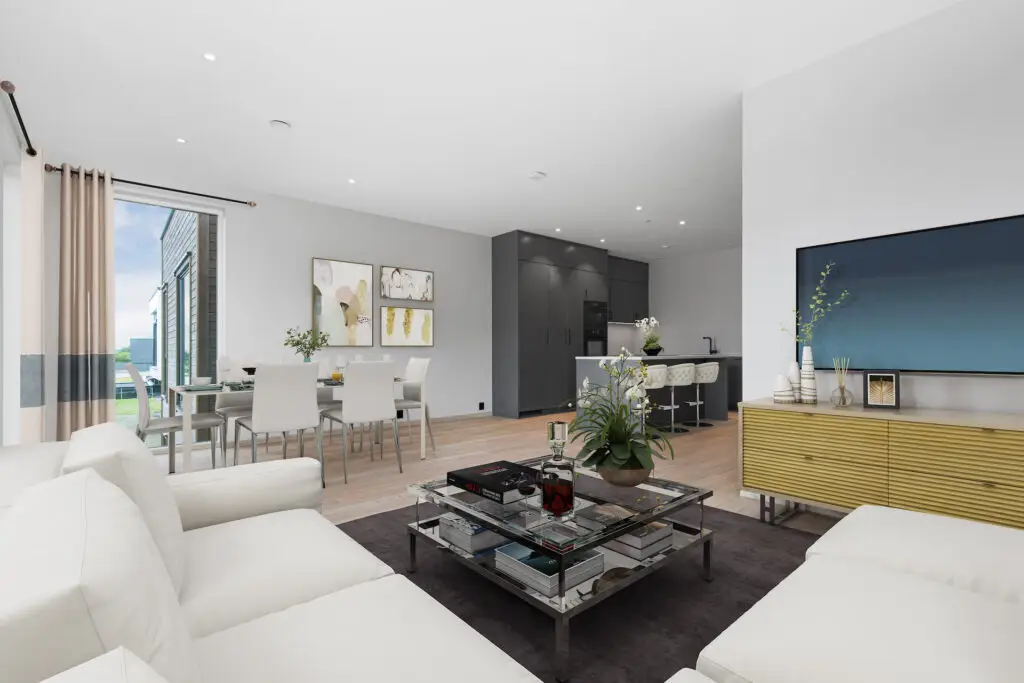
Virtual Staging by Digihomestudio.com
Virtual Staging vs Virtual Renovation: When to Use Each
Choosing between virtual staging vs virtual renovation depends largely on the specific needs of the property and its target audience. Let’s explore when to use each method.
When to Use Virtual Staging
Virtual staging is best for:
- Empty homes : If the property is vacant or has minimal furnishings, virtual staging can add warmth and appeal.
- Quick listings: For homes that are ready to be sold but need a visual boost to attract buyers.
- Budget-conscious sellers: When physical staging is not an option due to cost or logistical constraints, virtual staging provides a cost-effective alternative.
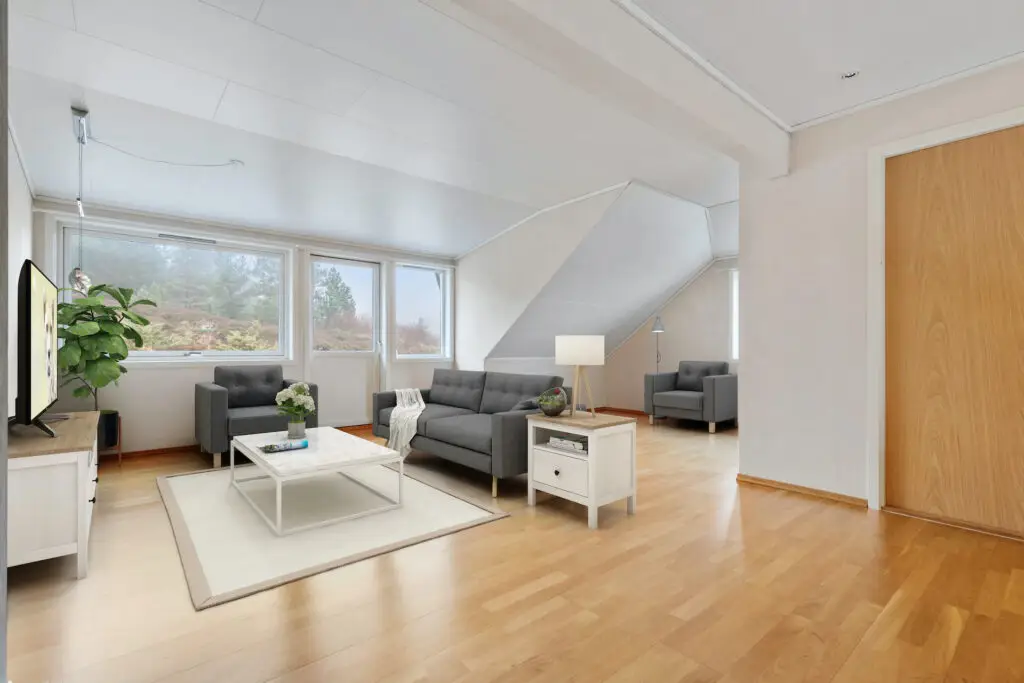
Virtual Staging by Digihomestudio.com
When to Use Virtual Renovation
Virtual renovation is ideal for:
- Outdated properties: If the property is dated or in need of visual improvement, virtual renovation can show buyers the possibilities for modernization.
- Fixer-uppers: For homes that require structural changes, virtual renovation helps buyers visualize how the property can be transformed.
- Pre-construction properties: Virtual renovation can also be used to show potential layouts and materials for properties still in the planning phase.
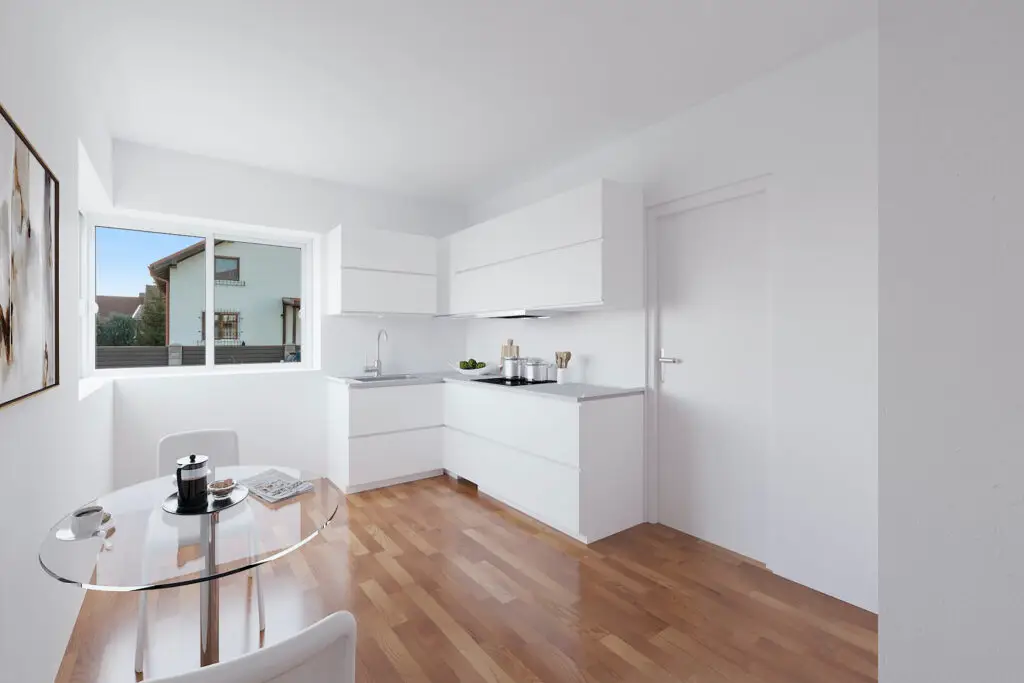
Virtual Renovation by Digihomestudio.com
Virtual Staging vs Virtual Renovation: Benefits for Real Estate Marketing
Both virtual staging vs virtual renovation offer distinct advantages that can greatly enhance real estate marketing efforts.
Benefits of Virtual Staging
- Enhances online listings: Virtually staged properties are more visually appealing and can stand out in crowded online markets.
- Versatility: Virtual staging allows for different design styles, making it easier to appeal to a wide range of buyers.
- Cost-effectiveness: Compared to physical staging, virtual staging is an affordable way to create an inviting space without the need for rental furniture.
Benefits of Virtual Renovation
- Increases buyer imagination: Virtual renovation helps buyers see the potential in properties that may otherwise be overlooked due to outdated designs or needed repairs.
- Highlights property potential: For fixer-uppers, virtual renovation demonstrates how a home can be transformed, making it more attractive to buyers willing to invest in remodeling.
- Avoids renovation mistakes: Virtual renovation allows homeowners to experiment with different layouts and materials before committing to costly physical changes.
Suggestions for Reliable Virtual Staging vs Virtual Renovation Services
If you are looking for a professional virtual staging vs virtual renovation service provider at an affordable price, Digihomestudio.com is a worthy place for you to trust and accompany. You can expect to invest around $29 for a meticulously designed and lifelike final image, suitable for showcasing your home across various digital platforms.
We have a network of world-class virtual stage editors and designers in Vietnam. To ensure the best level of service, the customer service team is located in the US.
Our virtual home staging services include:
- Staging for empty or furnished rooms
- Change the color of the walls and floors
- Virtual renovation
- Erase furniture and small objects
- And much more!
If you’re prepared to elevate your real estate marketing strategies, reach out to Digihomestudio.com now and experience the benefits of collaborating with one of the top virtual staging firms available today.

Virtual Staging by Digihomestudio.com
Conclusion
In today’s competitive real estate market, both virtual staging and virtual renovation offer invaluable tools for showcasing properties. While virtual staging is perfect for enhancing the appeal of empty or lightly furnished homes, virtual renovation provides a way to showcase the potential of properties that may need more substantial updates. Whether you’re a real estate agent, homeowner, or buyer, understanding the difference between **virtual staging vs. virtual renovation** can help you choose the right method to maximize the impact of your real estate listings.
Read more:





Leave a Reply